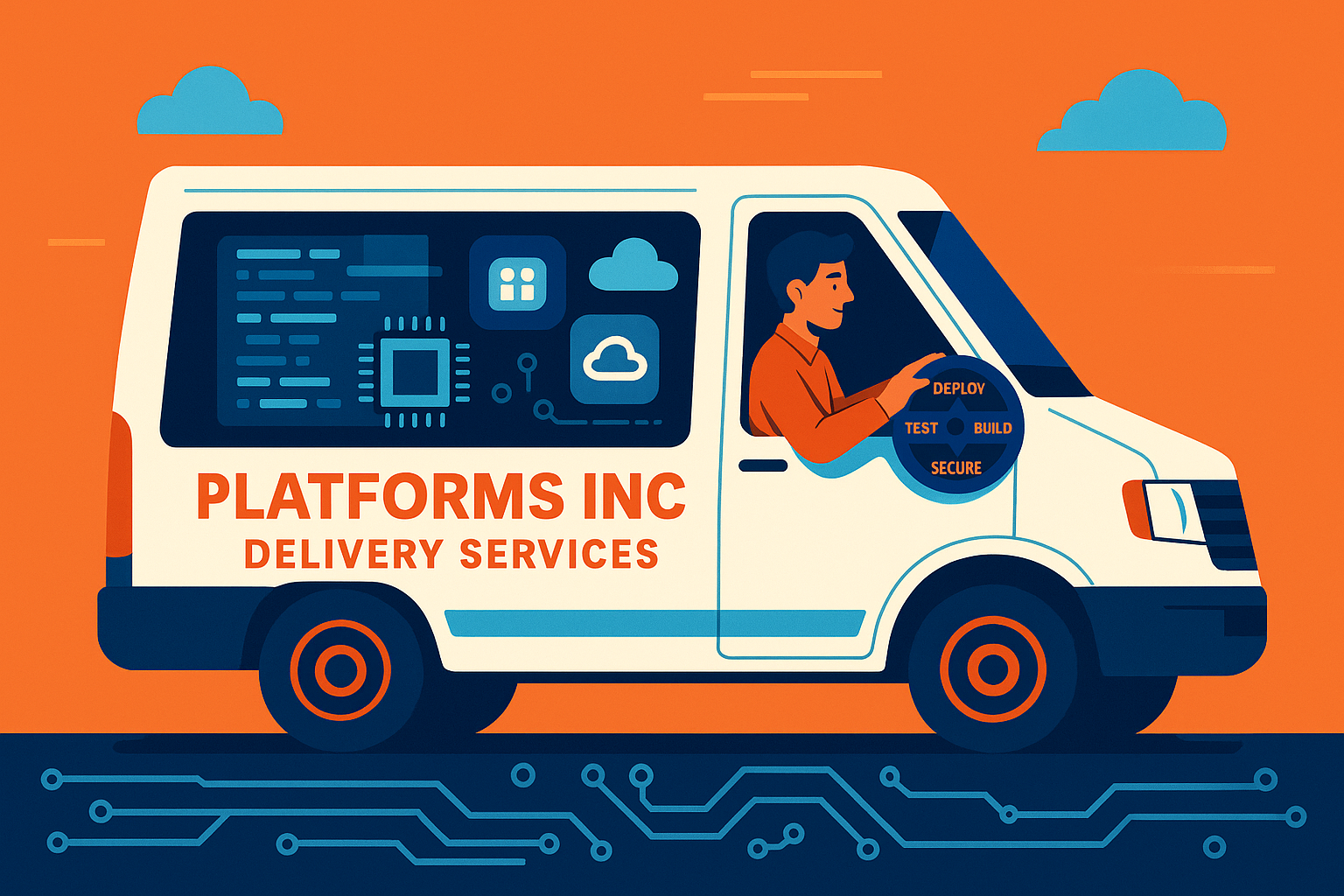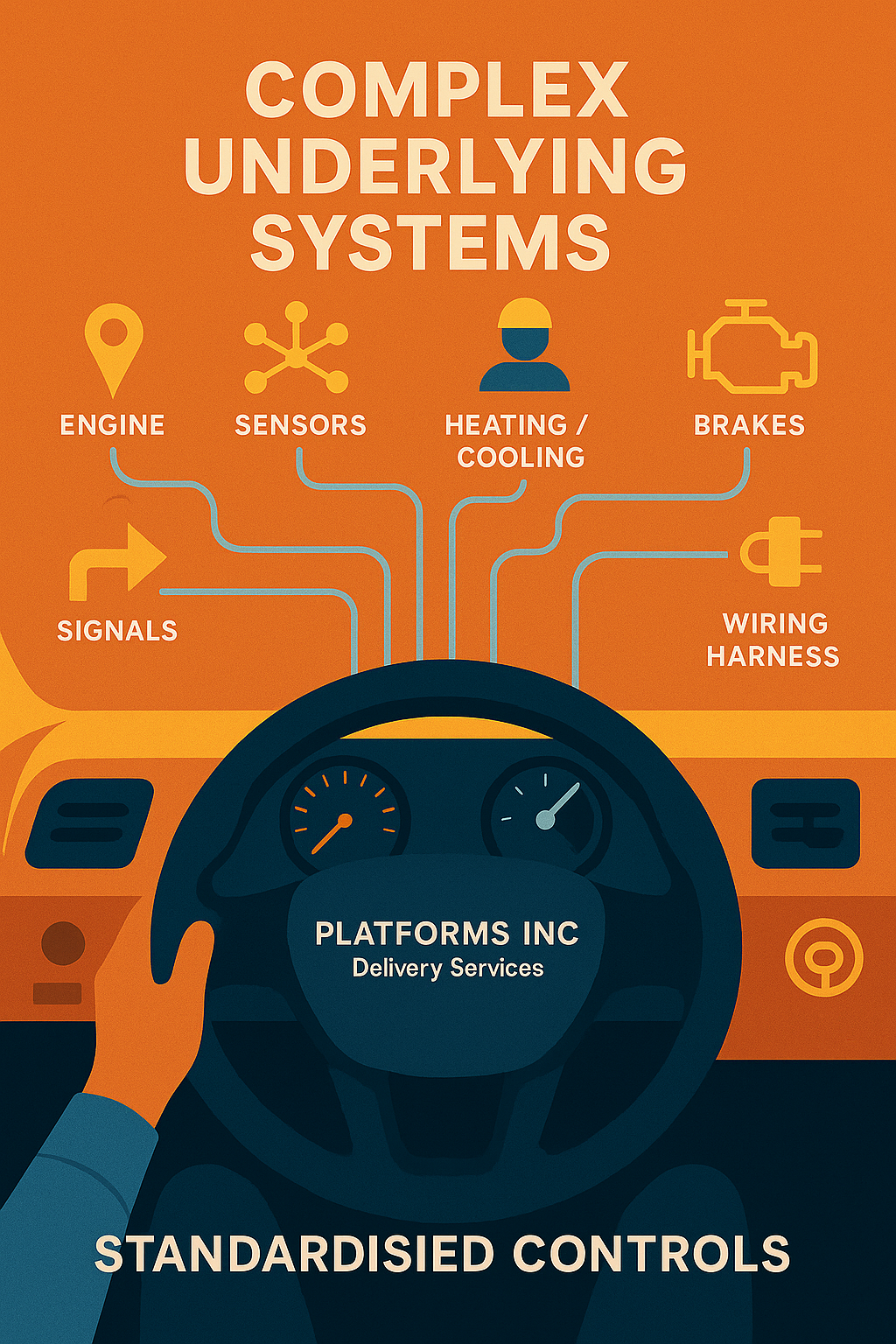
An analogy for digital platforms
Have you ever wondered what a digital platform is?
Digital Platforms are like the magician’s hat of the enterprise I.T. world; exactly how they work is a mystery to many and everyone wants to know what’s inside them. Existing mostly in the realm of computer software, digital platforms are big, complex and largely intangible things. Furthermore the language we commonly have for them is often hard for people to understand, sometimes even for people who work in the organisations that build and use them.
Why is this important?
My own experience suggests to me that, despite being so poorly understood, digital platforms are more pervasive and important in industry than ever before. Recent software architecture trends, such as microservices, serverless etc have resulted in organisations building and running more software components than they ever have before. Digital platforms evolved as a response to this growth in the need to deliver software, they exist to help organisations optimise the creation, delivery and operation of software, so it follows that the importance of understanding digital platforms is now paramount.
This got me thinking: Is there some fairly simple, widely understood, real world analog, that I could use as an analogy for digital platforms, in order to help more people understand them? After a quick ponder, and rather unexpectedly (to me at least), I think that delivery vans might be just the ticket!
Now, no analogy is perfect, so there might be areas which make less sense than others, but try this out with me and see if you think it makes sense.
What is a delivery van?
A delivery van’s primary purpose is to deliver items from one place to another. In real life the items can be anything, but in our analogy the items being delivered will be the software.
The van exists within an ecosystem, for example it has a manufacturer. The manufacturer has tools to create the van, and mechanics to repair them when they go wrong.
Vans can’t deliver their items on their own (yet anyway!). They need a driver to drive the van on its journey, delivering the items at the end.
To drive a van the driver has to:
- Have driving lessons: This teaches them how to drive the van in accordance with any relevant laws (governance), and also how to ensure that they drive the van safely, without injuring any other road users.
- Pass an official driving test: Proving that the lessons they have undertaken have given them sufficient knowledge to drive safely and legally.
The van has a set of standardised controls that allow the driver to drive it:
- Ignition
- Accelerator pedal
- Brake pedal
- Gears (and optionally a clutch pedal)
- A Steering Wheel
- Other peripheral controls (indicators, mirrors etc)
- Etc
The standardised controls can make the van appear as a simple mechanism, but it is actually a fantastically complex set of systems (gearbox, engine, ignition, hydraulics, heating, cooling, electronics etc), all working together. The driver doesn’t need to understand the detailed workings of each of those systems in order to drive the van, they just need to know how to operate the standardised controls, which they learn to do in their driving lessons.
The van’s complex systems are typically hidden away (abstracted) under the bonnet. If something goes wrong a mechanic, who typically works for the van manufacturer, can open the bonnet to access them, for diagnosis and repair, but when everything is working no-one should usually need to go in there.

Having obtained their licence, the van driver can then load the van up with items, drive to their destinations, unloading each item from the van and giving it to the customer at its destination.
Let’s recap:
- A delivery van’s purpose is to deliver items
- Each item goes on a journey, starting in one place and ending in another
- The delivery needs a driver, to drive the van, taking the items on their journey
- The van driver must learn how the van works, and how to drive it legally and safely before they can drive it
- To drive the van, the driver doesn’t need to understand the complexities of all of the van’s systems, but they do need to understand how to use its standardised controls
- The van is designed and built by its manufacturer, and can be repaired by the manufacturer’s mechanics
- The van driver delivers each item by loading it up, driving it to its destination, unloading and giving it to the customer.
Hopefully this makes sense so far, now that we’ve laid out the important aspects of a van, let’s try and do the same for digital platforms, mapping them back to the delivery van related aspects we’ve already mentioned.
What is a Digital platform?
Digital platforms (vans) exist to facilitate the delivery of software (items).
Digital platforms (vans) are built by platform teams (van manufacturers) and maintained by platform team engineers (mechanics).
Digital platforms (vans) are complex collections or processes, technologies, governance and opinions, but they present a set of standardised capabilities (steering wheel, pedals etc).
Having learned how to operate the standardised capabilities, software teams (van drivers) can use them to deliver their software safely and legally (drive the van).
Software teams don’t need to concern themselves with the underlying platform complexities (complex systems under the bonnet), as these are maintained by the platform teams (mechanics).
Software teams (van drivers) use platforms (vans) to deliver their software (items). They do this by writing, testing, packaging, deploying and operating it (driving the van, unloading, giving to customer etc).
In summary:
| Van Scenario | Digital Platform Scenario |
|---|---|
| Van | Digital platform |
| Driver | Software Team |
| Items | Software |
| Standardised controls | Platform capabilities |
| Complex systems under the bonnet | Underlying platform services |
| Van manufacturer | Platform teams (as a collective) |
| Van mechanic | Platform team engineers |
| Driving the van, unloading, giving to customer etc | Using the platform’s capabilities to deliver the software |
Conclusion
As mentioned above, no analogy is perfect. However, the hope is that this one makes it easier to understand the fundamental purpose of digital platforms: they are vehicles for standardising and optimising the delivery of software. It provides a simple, shared language upon which more complex digital platform conversations can be built.
What’s Next?
I have some ideas for follow-up posts where I will aim to delve deeper into various aspects of digital platforms, continuing with this analogy. Stay tuned!
We’d Love Your Feedback
Did this analogy help you understand digital platforms? Or perhaps it confused what you thought you already knew? I’d love to hear from you! Feel free to drop me a message and share your thoughts.
Notes
- The images used in this article were generated by Chat GPT.